Enquiries into how to clean natural fibre carpets are on the increase at Prochem – Phil Jones looks at how to keep it trouble-free…
Dismissed by many cleaning operators as ‘hard to clean”, “they shrink!” or just “I’ve got no idea, so I don’t offer my services”, natural fibre carpets are being used more than ever, spurred on by their warmth, durability and of course, excellent eco properties.
However, cleaning them does need consideration: their sensitivity to moisture making them not wet-cleanable.
The problem lies in a proneness to cellulosic browning; the natural fibres containing lignin dyes can be released by water and/or cleaning detergents and leach to the pile surface causing coffee/chocolate coloured staining which may be virtually impossible to rectify.
Unsurprisingly, most experienced cleaning operators are well aware that these carpet types are labelled as ‘dry clean’ or ‘compound clean’ only. Like all natural products, natural fibres may fade faster than synthetic carpets in direct sunlight and a slight colour variation may occur between samples and finished product.
And so, a greater understanding of these beautiful floor coverings is important.
Let’s start by looking at the various types of natural floorcoverings you may come across, followed by some cleaning tips.

Sisal…
This is derived from the leaf of the plant Agave Sisalana, which grows in dry, desert climates.
Its use has grown over the years, from traditional applications like rope and twine to flooring and more. Consequently, dedicated sisal farms in Africa and Brazil have been established to keep feeding this plentiful, replenish-able product to the world.
Sisal is not only sustainable but grown with minimal – if any – pesticides and herbicides, further reducing its impact on the environment.
The leaves themselves are course and rough but when they are crushed, washed and then dried, they become softer. Then, the fibres are extracted and spun into a yarn which can be woven into an array of weave designs.
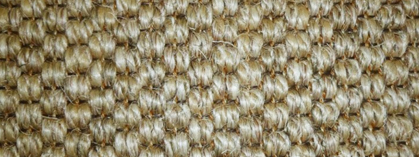
Intricate and soft, sisal is the toughest natural fibre flooring of the bunch. It’s equally at home welcoming guests in the hall and on the stairs or assisting to keep the family living areas warm and cosy. It can form a fitted carpet or custom-made area rugs.
Many users complain that sisal flooring can be quite coarse underfoot; however it does soften with regular use and vacuuming. It’s also anti-static, its natural fibres helping to control humidity levels in the atmosphere (a good sales point in areas where computers are running).
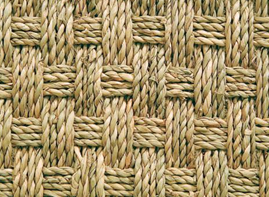
Seagrass…
Seagrass flooring is made by weaving a yarn spun from the dried leaves of the seagrass plant, which grows in the paddy fields of China and Vietnam. It is not actually a true grass, but the leaves are long, flat and blade-like – so the name stuck.
The fibres are exceptionally strong and have a natural colour that cannot be bleached or dyed and can vary from a yellow green to dark green, depending on when it was harvested.
After harvesting and drying, the seagrass fibres are spun into a strong yarn that can then be woven into a huge range of products like bags and baskets, and of course flooring.
Again, like Sisal, Seagrass can be made into wall-to-wall carpeting or small area rugs. It was a popular flooring until the early 20th century, as it not only helped to insulate the houses but also made an effective sound-proof barrier.
Just like any other woven product, seagrass flooring is available in a number of different patterns designs and fine or coarse weaves and it is usually rated as suitable for medium domestic use (e.g. not recommended for use in kitchens or bathrooms).
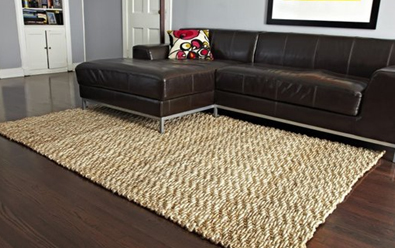
Coir…
Made from the fibre taken from the husk of coconuts, this wonderful product is probably the oldest form of natural plant covering used for floors, with its use dating back centuries.
Soaked in fresh water for several months, the material is then beaten to soften the cellulose fibres, before being spun by hand. The fibre is strong, highly textured and able to withstand all the wear and tear of modern life.
Unlike synthetic floor coverings which have chemicals added to create particular colours and effects, there is little to processing coir. It wears well, too.
Chemicals used to make synthetics also create the perfect conditions for rapid, wear whereas coir in its natural state retains its inherent strength and durability. And the natural oils inherent in the fibres repel insects, notably the notorious carpet moth.

Jute…
This is the fibrous inner bark from the stalk of a giant tropical herb, named Cochorus, and is closely related to hemp.
Jute is mainly grown in southern India and other hot, damp regions of Asia and after the harvest, the long, soft, shiny stems are tied into bunches and then soaked in water for two to three weeks to soften them.
Then they are further softened by pounding with wooden mallets and finally dried in the sun before being spun into coarse, strong threads. It is one of the easiest sustainable fibres around, normally only being grown for between 4-6 months before being harvested. This cycle means it can be replenished far quicker than other natural products.
Jute is the name for the individual fibre whereas, in sheet/cloth form, it is often described as Hessian. Those “Bags for Life” sold at the local supermarket are often made of Jute.
Jute is naturally light brown and will fade in direct sunlight. Advantages include its low thermal conductivity and anti-static and acoustic insulation properties. Due to its structure and natural oils, Jute has excellent fire behaviour properties; it may catch fire, but will often self-extinguish.
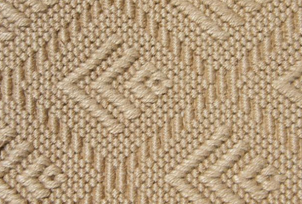
Cleaning natural flooring…
You may have noticed by now that all these natural fibre floorings present cleaners with a challenge in that they can absorb moisture, whether used to clean them or even spilt on them, with over-wet fibres then releasing lignin dyes with consequent staining to the pile surface.
So, first off, the ideal way to maintain these beautiful flooring types is to keep up a regular vacuuming programme to remove soils. If those soil levels are left unchecked, then moisture cleaning is often the only way to resolve the cleaning issues, but this should be kept minimal.
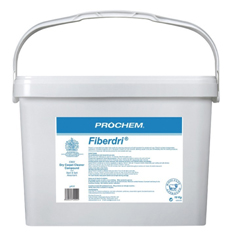
Introducing Fiberdri…
Not surprisingly, dry cleaning is the favoured method for natural fibre flooring: and that means it’s time to get out Fiberdri.
This Prochem solution is an extremely low-moisture, natural, organic compound made from corn husks and sawdust, that’s then charged with small amounts of bio-degradable cleaning detergents and mineral solvents. Their job is too ‘attract’ the soils from the carpet fibres and allow them to be absorbed into the compound.
Thoroughly vacuum prior to cleaning and then hand-sprinkle (or chicken-feed) the compound onto the flooring and agitate or brush into the carpeting for full contact with any soiling. This can be done with a variety of machinery, depending on area size.
The easiest option is to use a suitable carpet brush and simply brush the Fiberdri into the carpet. Alternatively, use Prochem’s DCS (Dry Compound System) PB14E electronic, single brush roller machine. Either is ideal for small areas, such bedrooms, hallways and front rooms.
Anything bigger, then use a Prochem TM4 contra-rotating, twin brush machine (below) – it’s going be much more cost- and labour-effective.
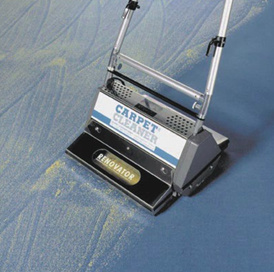
Cross-brush the compound in alternating north/south and east/west directions and leave for between 15-30 minutes for it to absorb the soiling.
The used compound can then be either taken away by using an upright vacuum cleaner or by attaching Renovation trays onto the TM4 machine and running over the floor area again (saves all those vacuum bags!)
It’s worth noting that these products and methods could also be employed for cleaning high shrinkage risk carpeting, like Belgian Wiltons whose construction combines polypropylene pile fibres and jute/woven backings.
A final recap on an important point: excess water (even if using hot water extraction) could easily cause shrinkage to natural fibre flooring. That’s why the National Carpet Cleaning Association (NCCA) recommend you clean it using the dry cleaning compound (FIBERDRI) method.
-ends-
Issued July 2016 on behalf of Prochem Europe Ltd by
petermuir public relations
Whiteleaf Business Centre, Buckingham Industrial Park, Buckingham MK18 1TF, UK
tel 00 44 (0) 01280 308010 www.pmpr.info
About Prochem Europe
Founded in 1974, Prochem Europe Ltd. is a British manufacturer of cleaning and maintenance products for carpets, fabrics and floors. Chemicals solutions are made at the company’s headquarters in Chessington, Surrey and are available through an extensive network of national and international distributors along with its carpet, fabric and floor cleaning equipment, accessories and spares. Britain’s leading commercial provider of training to professional cleaners, Prochem Europe also offers a range of industry-recognised training courses for carpet, upholstery and floor cleaning and maintenance at Chessington, covering the latest techniques and maintenance methods.


